#hatice sultan daughter of mahmud ii
Photo







Ottoman Princesses named: Hatice
Hatice is the Turkish equivalent of the Arabic name Khadija, the name of the first wife of Prophet Muhammad. As such, it was one of the most popular names in the Ottoman Dynasty both for princesses and consorts.
#history#historyedit#ottoman history#hatice hatun daughter of orhan#hatice hatun daughter of murad ii#hatice sultan daughter of mehmed iii#hatice sultan daughter of mehmed iv#hatice sultan daughter of mustafa iii#hatice sultan daughter of mahmud ii#hatice sultan daughter of murad v#durrusehvar sultan daughter of abdulmecid ii#ottomanladiesedit#princessesnames#hatice hatun daughter of mehmed i#hatice sultan daughter of bayezid ii#hatice sultan daughter of sehzade bayezid#hatice sultan daughter of ahmed iii#hatice sukriye sultan daughter of sehzade yusuf izzeddin#long post
1K notes
·
View notes
Text
International Known Queens & Empresses (4/?)
Haseki Hürrem Sultan


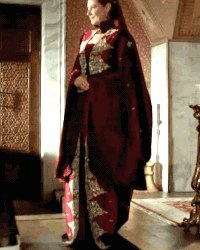



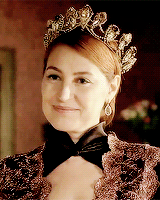
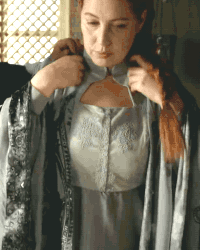


Daughter of Lisovsky (?)
Wife (Haseki Sultan) of Suleiman the Magnificent
Mother of Sehzade Mehmed, Mihrimah Sultan, Sehzade Abdullah, Sultan Selim II, Sehzade Bayezid, and Sehzade Cihangir
Grandmother of Ayse Hümasah Sultan, Sultanzade Osman (Mihrimah), Sultan Murad III, Sehzade Mehmed (Selim), Sehzade Abdullah (Selim), Sehzade Cihangir (Selim), Sehzade Mustafa (Selim), Sehzade Suleiman (Selim), Ismihan Sultan (Selim), Gevherhan Sultan (Selim), Sah Sultan (Selim), Fatma Sultan, Sehzade Orhan, Sehzade Osman (Bayezid), Sehzade Abdullah (Bayezid), Sehzade Mahmud (Bayezid), Mihrümah Sultan (Bayezid), Hatice Sultan (Bayezid), Ayse Sultan (Bayezid), and Hanzade Sultan (Bayezid)
12 notes
·
View notes
Photo

Family of Bayezid II (quite big lol)
+1 information about the daughter of Mahmud, Ayşe: She surely was still alive between November 1555 and November 1556 since she is listed in Old Palace register with a daily stipend of 70 aspers.
The same 70 apsers daily stipend was given to Sehzade Ahmed’s unnamed daughter. We dont know if this stands for Kamer, Fatma or the unknown daughter.
About his daughters:
Selcuk Sultan 1459-1508
- mother unknown
- she married twice: 1/Ferhad Bey in 1484; 2/Mehmed Bey in 1486
- she had five children: 1/ Nesl-i Şah who died in 1564, she married Halil Paşa in 1510; 2/Gaazi Husrev Bey who was governor of Sarajevo, which he developed into a great city, then he was governor of Smederevo (1521), governor of Bosnia (1526-1533), then governor of Belgrade in 1533 and again governor of Bosnia from 1536 to 1541. He died in Sarajevo and was buried there. 3/ Hanzade who married her cousin, a son of Ilaldi Sultan 4/ unnamed princess who married the son of Halil Paşa (her eldest sister’s husband) in 1510; 5/unnamed princess who married twice, the first time to Grand Vizier Yunus Pasha and the second time to Defterdar Mehmed Çelebi (later Grand Vezier and Egypt governor)
Ayşe Sultan 1465 - after 1515
- she may have been sister to Şehzade Ahmed or to Şehzade Korkut. Ahmed was born in 1466 Korkud in 1467 so Ayşe surely was born before them.
- she married Güvegi Sinan Pasha in 1480 and had several (at least 6) children but we don’t have information about each one of them: 1/ GevherŞah who married one İbrahim Bey 2/ KamerŞah who married the son of Grand Vizier Mesih Paşa 3/ Fatma who married another son of Grand Vizier Mesih Paşa 4/ Ahmed Bey; 5/ Mustafa Bey; 6/Hanzade Ayşe Mihrihan who later married Dukaginzade Sultanzade Mehmed Paşa and had a daughter Mihri Hatun, who surely was alive between 1555 November and 1556 November.
- she built a mosque and a school in Gallipoli and in 1505 she established a foundation
Hatice Sultan 1465 - 1500
- the identity of her mother is unknown
- she married to 1/ Müderris Kara Mustafa Pasha around 1479 and had two children with him: Ahmed Çelebi (1480?-1500) and Hanzade; 2/ she married Faik Pasha after 1483
- she built a mosque, school and fountain in Edirnekapi
- she was buried in Bursa in the Hatice Sultan Tomb, built by her son
Gevherimülük Sultan 1467 - 1550
- mother unknown
- she married to Ahmed Pasha and had 2 children: 1/ Nesli Şahwho died in 1559, she married Dukaginzade Iskender Pasha; 2/ Mehmed Pasha who died in 1557, was governor of Aleppo and Egypt, he married his cousin Ayşe Hanzade Mihrihan, daughter of Ayşe Sultan
- she built a school near the Zal Mahmud Pasha Mosque, and she was buried there
Şehzade Hundi Sultan 1465(?) - 1511
- some suggest a birth date of 1470 but it is not correct as she was the daughter of Bülbül Hatun and so Şehzade Ahmed’s sister. Ahmed was born in 1466 so Hundi had to be born before him.
- Hersekzade Ahmed Pasha was her husband from 1484 and had children with him: 1/ Mustafa Bey who was governor of Bozok and died in 1533 killed by rebels in his province; 2/ HümaŞah who died after 1551; 3/ Musa Bey
Ilaldi Sultan ? - before 1518
- mother unknown
- she had two children with her husband Hain Ahmed Pasha: 1/Aynişah who died after 1531 and married Abdüsselam Çelebi; 2/ unnamed son who married his cousin, the unnamed daughter of Selçuk Sultân
- she wrote a congratulation letter to Selim I
Aynişah Sultan 1464(?) - after 1512
- daughter of Şirin Hatun and sister of Şehzade Abdullah (b. 1465)
- she married Akkoyunlu Damad Göde Ahmed Bey in 1490 and had children: 1/ Hanzade who married to Yahyapaşazade Gaazi Küçük Bali Paşa; 2/ unnamed princess who married Şehzade Alaeddin, one of Şehzade Ahmed’s sons
- she built a school in Istanbul and established a foundation in 1506
- she sent letters of congratulations to Selim I when he became sultan
Hüma/Hümaşah Sultan ? - after 1504
- mother unknown
- she married Antalyalı Bali Paşa around 1482
- she was buried in Bursa
Kamer/Kamerşah Sultan ? - ?
- she was the daughter of Gülruh Hatun
- she was married to Damad Nişanci Kara Davud Pasha, with whom she had a daughter who later married one Mesih Bey.
- she was buried in the tomb of her mother in Bursa
Şah/Şehzade Şah Sultan ? - after 1506
- her mother is unknown
- she married Nasuh Bey around 1490 and had a daughter
- she was involved in charity
- she built a mosque in 1506
- she was buried in her sister Hatice’s mausoleum in Bursa
Sofu Fatma Sultan 1466(?) - after 1515
- she was the daughter of Nigar Hatun and sister of Şehzade Korkut and since Korkut was born in 1467 so actually Sofu Fatma should born even before 1464/5/6.
- she married Güzelce Hasan Bey around 1504 and had two children with him: 1/ Mehmed Çelebi who later married Ayse Sultan daughter of Şehzade Alemşah; 2/ unnamed daughter who later married Ahmed Bey, son of Ali Bey and Fatma Hanımsultan
- about her marriages it is possible she had a first marriage which is not listed by most historians (she would be too old for a first marriage in 1504). She should have a first marriage around the early 1480's. About the identity of the first hubby: Öztuna claims Sofu Fatma's firs husband was İsfendiyâroğlu (Cândâroğlu) Mirza Mehmed Pasha, son of Kyzyl Ahmed Bey. Öztuna gives no marriage date. The problem is, Fatma remarried in 1504 but the pasha was alive until 1530. I don't see why would they divorce, so well I don't know. Öztuna claims they had a son, Mehmed Bey, together who later married Selim I's daughter Gevherhan. Its fine Fatma's son Mehmed did marry Gevherhan okay. But then why would she name her second son also Mehmed? Because she had a son Mehmed from her second marriage who married Ayse Sultan daughter of Şehzade Alemşah. So just why 2 Mehmeds? I dunno this... Maybe one of the names is mistaken?
- she was charitable --> left all her possession to the poor when she died
- she was buried in the tomb of her half-brother Şehzade Ahmed in Bursa
Sultanzade Sultan ? - ?
- daughter of Hüsnüşah Hatun and sister of Şehzade Alemşah
#Bayezid ii#Ayşe hatun#ayşe#ayse#bülbül hatun#bülbül#ferahşad hatun#ferahsad#hüsnüşah hatun#husnusah#ayşe gülbahar hatun#ayse gülbahar#gülbahar#gulbahar#gülruh hatun#gulruh#nigar hatun#nigar#şirin hatun#şirin#sirin#Abdullah#Ayşe sultan#Hatice Sultan#Ahmed#Korkut#Gevherimülük Sultan#gevherimülük#gevheri#hatice
28 notes
·
View notes
Text
The Rise and The Fall of Kosem Sultan (Part I)
Kosem Sultan: The Beginning.

Anastasia, born in 1589 in Tinos, Greece. Anastasia was living happily with her Father, Mother and Sister. On the other hand Shehzade Ahmed, son of Mehmed III of ottoman empire was trying to cope up with the loss of his elder brother. His grandmother Safiye Sultan brought some gifts to enlighten his mood. Among them was the portrait of Anastasia. It proved to be the most favorite present for Ahmed. It was the love at first sight. Safiye sent her guards Nasuh Pasha and Golge to capture Anastasia. Nasuh and Golge reached Tinos and began to find her house. When they reached, they found her Parents. When he inquired about her, her father said that she is our of the city. Nasuh didn't believe him. Unluckily Anastasia's part of the cloth was out of the hiding spot. Nasuh found her and she was captured


On their way Anastasia met Alexander (a young boy part of new comers army). She asked him for help and he promised that when he'll arrive in Istanbul he'll surely help her. Finally she reached Topkapi Palace and was given in care of Cennet Kalfa who named her Hatice. Next day she met Safiye and begged her to release her but she refused and told her life lessons. Safiye named her Mahpeker. Ahmed slept with Mahfiruz before Anastasia arrived. Anastasia was sent to Ahmed who was now a Sultan but she was reluctant to get in any kind of relationship with him. She was trying to run away. She also tried to attempt suicide but then she remembered her father's words that she is his powerful daughter. During all this Safiye made her realize that she's in love with Ahmed. She also gave her red dress which she wore in her youth when she was in love with Sultan Murad.



Rivalry began between Mahfiruz and Anastasia. Palace even witnessed their physical fights as well. Once she was even beaten by her. After sometime when Alexander was practicing swords with Ahmed, he introduced her to Alexander without knowing that they know each other. As promised Alexander asked her to run away about which she agreed and next night she went out of palace to run away. On the other hand Ahmed's aunt Fahriye had poisoned him and his brother Mustafa because of her love interests. Ahmeds situation was critical. Anastasia when running realized her love for Ahmed and returned back but unfortunately guards saw her and informed Valide about this. As she ran away at the same time the Ahmed was poisoned all the doubt went on her. She was even punished and was beaten during investigation. Both Ahmed and Mustafa were critical and dynasty wasn't left with any other heir of the throne. Common people started rebellion as they thought that Sultan had died and Palace officials are hiding it. The Empire running successfully for 400 years was in danger.


Rebellion rose to an extent that rebels reached till palace gates. Sheikh Mahmud Hudai gave a Taveez for Ahmed for protection. Ahmed was critical when rebels were trying to enter Palace. Anastasia decided to face rebels and tell them about the real situation. She took Ahmed's Taveez (object for protection) and left his room to face rebels. This was the time when her childhood was over.

To be continued ...
Coming up next - Part 2 ( Kosem Sultan: Rise to Power)
7 notes
·
View notes
Photo
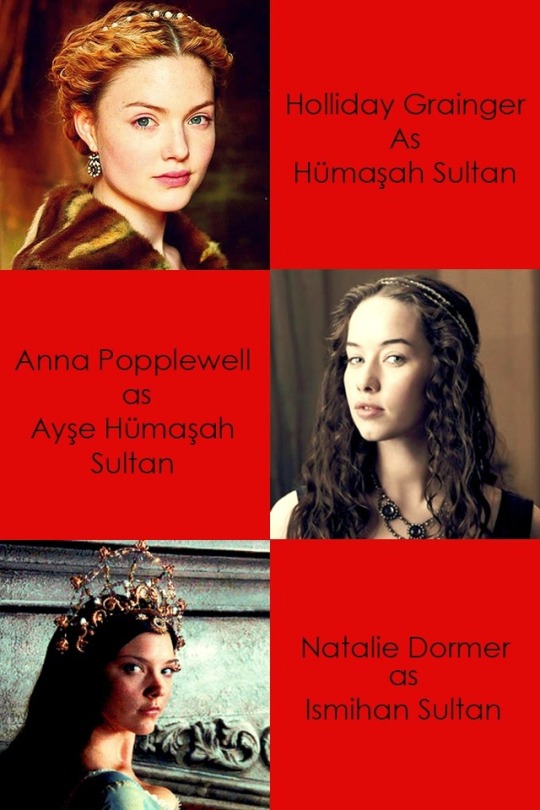

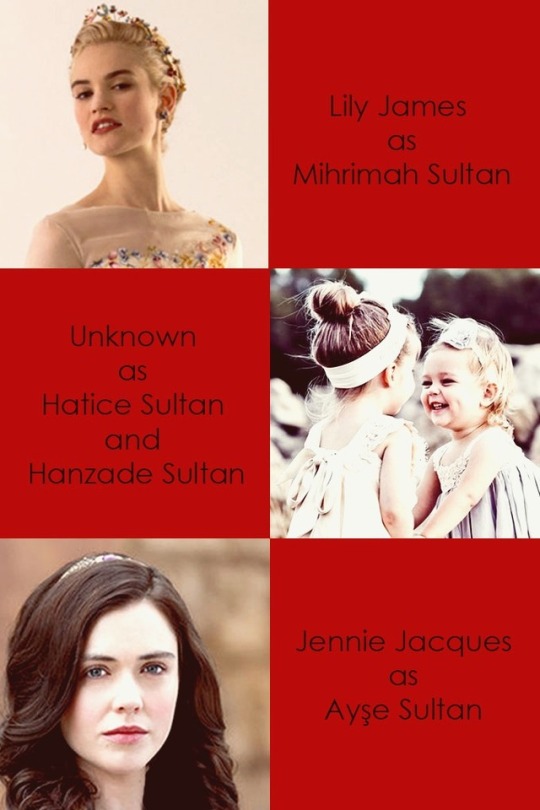
Muhteşem Yüzyıl (Magnificent Century) fancast: Daughters of Hürrem Haseki Sultan. Second generation.
1. Hümaşah Sultan (1540-1593) - daughter of Şehzade Mehmed of the Ottoman Empire.Like her cousin Ayşe Hümaşah Sultan, she was reportedly beloved by their grandfather, to whom she wrote letters.She is regarded amongst the most influential women of Suleiman's reign.This affection can be explained, in large measure, by the fact that her late father, Mehmed, was Suleiman's favorite son. It was she who, in 1563, gifted her cousin Şehzade Murad (future Sultan Murad III) with a concubine that would go on to be Safiye Sultan.
2. Ayşe Hümaşah Sultan (1541–1594) - daughter of Mihrimah Sultan of the Ottoman Empire and Rüstem Pasha. She was her parents' first child and only daughter, and possibly her grandparents' first grandchild as well. She had several brothers, whose number and names are though contested.
3. Ismihan Sultan (1544 – 1585) - daughter of Selim II and Nurbanu Sultan. She was the most powerful daughter of Selim II because she was married to the Grand Vizier Sokollu Mehmed Pasha. She is famous for having built the Sokollu Mehmed Pasha Mosque and Esmahan Sultan Mosque.
4. Gevherhan Sultan (1544 - after 1604) - daughter of Sultan Selim II and Nurbanu Sultan. Soon after his succession, Mehmed's son by Handan Sultan, Ahmed I wanted to express his gratitude to Mehmed Pasha and Gevherhan Sultan for the role they had played in bringing his parents together. He also named one of his daughters after her.
5. Şah Sultan (1545 – 1580) - daughter of Selim II and Nurbanu Sultan. The union of Şah Sultan to Zal Mahmud is said to be a very happy one. They were suited to each another. It was said that, that they fell ill at the same time, lay in their deathbeds together, and expired at the same very moment.
6. Fatma Sultan (1559–1580) - daughter of Sultan Selim II. Fatma was born in 1559,during Selim's princedom, at Konya or Karaman where he served as sanjakbey, or provincial governor, at the time.
7. Mihrimah Sultan (1547 – 1594) - daughter of Şehzade Bayezid. Married in 1562 to Damat Müzaffer Pasha.
8. Hatice Sultan and Hanzade Sultan (1550/1556-?) - daughters of Şehzade Bayezid.
9. Ayşe Sultan (1553- 1572) - daughter of Şehzade Bayezid. Married in 1562 to Damat Hoca Ali Pasha Eretnaoğlu.
#hurrem sultan#magnificent century#muhteşem yüzyıl#Mihrimah Sultan#nurbanu sultan#sultan suleyman#perioddramaedit
35 notes
·
View notes
Text
On this day, 6 September, in Ottoman history:
6 September 1825 - birth of Hatice Sultan: daughter of Mahmud II and Fourth Imperial Consort Pervîz-felek Kadın, she was Atiye Sultan's younger full-sister. She died at the age of 17 of smallpox, on 19 December 1842. She was buried in the mausoleum of her father.
6 September 1884 - death of Gevheri Kadın: Fourth Imperial Consort of Sultan Abdülaziz, she was Abkhazian. She was the mother of Esma Sultan (1873-1899) and of Prince Mehmed Seyfeddin Efendi (1874-1927). Gevheri Kadın was a very affectionate woman who helped the poor and supported education of the orphans; she also provided funds for the repairs of mosques and madrasas. After the deposition of Sultan Abdülaziz, she lived in Ortaköy Palace until her death on 6 September 1884. She was buried in the courtyard of the New Mosque.
#history#ottoman history#on this day in history#on this day in ottoman history#hatice sultan daughter of mahmud ii#pervizfelek kadin#gevheri kadin#late ottoman empire
17 notes
·
View notes
Note
How many children of Mahmud II do we know about, and who were their mothers?
Hello! Mahmud II had a large family but, unfortunately, most of his children died in infancy. These are those who reached adulthood:
Saliha Sultan (16.6.1811 - 5.2.1843): daughter of Second Imperial Consort Âşûb-i Cân Kadınefendi. She married Dâmâd Halîl Rif’at Paşa in March 1834 and had three children with him: Sultân-zâde ‘Abdü’l-Hamîd Beyefendi (2.3.1835 – 3.1837), Sultân-zâde Câvid Beyefendi (1837?-?), Ayşe Sıdıka Hanım-Sultân (1821 – 1886).
Mihrimah Sultan (10.6.1812 – 3.7.1838): daughter of Second Imperial Consort Hacıye Hoş-yâr Kadınefendi (Fourth Imperial Consort at the time of the birth). She married Dâmâd Bursalı Mehmed Sa’îd Paşa in April 1836, and had a son with him: Sultân-zâde ‘Abdullâh Bey, who died with her.
Crown Prince (Valiahd-Şehzade) Abdülhamid (6.3.1813 - 20.4.1825): son of Â’lî-cenâb Başkadınefendi. He died at 12 years old and was buried in the mausoleum of his grandmother Nakşıdil Valide Sultan.
Atiye Sultan (2.1.1824 - 11.8.1850): daughter of Fourth Imperial Consort Pervîz-felek Kadınefendi, she married Rodosî–zâde Dâmâd Ahmed Fethî Paşa. With him, he had two daughters: Seniyye Hanım-Sultân (3.10.1843 – 10.12.1910) and Feride Hanım-Sultân, who probably died in infancy.
Hatice Sultan (6.9.1825 - 19.12.1842): daughter of Fourth Imperial Consort Pervîz-felek Kadınefendi. She was Atiye Sultan's full sister, and died at the age of 17.
Adile Sultan (23.5.1826 - 12.2.1899): daughter of Third Imperial Consort Zer-nigâr Kadınefendi (Fourth Ikbal at the time of the birth), she married Grand Vizier Dâmâd Kapdân-ı Deryâ Mehmed ‘Alî Paşa in June 1845. They had four children together but three of them died in infancy (Sıdıka Hanım-Sultân, Sultân-zâde İsmâ’îl Beyefendi, ‘Aliyye Hanım-Sultân), and only Hayriye Hanım-Sultân reached adulthood (6.1846 - 26.7.1869).
Crown Prince (Valiahd-Şehzade) Abdülhamid (18.2.1827 - 1829): the first child of Mahmud II to be born after the "Vak’a-i Hayriyye" (the "Fortunate Event", ie. 15 June 1826, when Mahmud II completely wiped the janissaries off earth). The little prince was called Crown Prince but him too died and was buried in the tomb of Nakşıdil Valide Sultan.
Abdülmecid I (25.4.1823 – 25.6.1861): sultan of the Ottoman Empire, his mother was Second Imperial Consort Bezmialem, whom later became Valide Sultan.
Sultan Abdülaziz (18.2.1830 – 4.6.1876): sultan of the Ottoman Empire, his mother was Second Ikbal Pertevniyal who, with the birth of her son rose to the rank of Fifth Imperial Consort. She would later be Valide Sultan.
source:
Yılmaz Öztuna, Sultan II. Mahmud: Cihan Hakanı ve Yenileşme Padişahı
#anon#ask post#ask: ottoman history#mahmud ii#saliha sultan daughter of mahmud ii#mihrimah sultan daughter of mahmud ii#atiye sultan daughter of mahmud ii#hatice sultan daughter of mahmud ii#adile sultan daughter of mahmud ii#abdulmecid i#abdulaziz
13 notes
·
View notes
Photo










𝐢𝐧 𝐭𝐡𝐞 𝐦𝐨𝐧𝐭𝐡 𝐨𝐟 𝐃𝐞𝐜𝐞𝐦𝐛𝐞𝐫 𝐢𝐧 𝐎𝐭𝐭𝐨𝐦𝐚𝐧 𝐡𝐢𝐬𝐭𝐨𝐫𝐲
#history#historyedit#ottoman history#*everymonth#saliha naciye hanim#saliha dilasub sultan#emine naciye sultan daughter of sehzade selim suleyman#nurbanu sultan#munire sultan daughter of abdulmecid i#musfika kadin#ayse sineperver sultan#murad ii#sevkefza sultan#mihrengiz kadin#mahmud i#selim ii#hatice sultan (daughter of mahmud ii)#mehmed iii#sehzade cem son of mehmed ii#selim iii#sehzade mustafa son of mehmed ii#nevfidan kadin#mustafa ii#ahmed iii#ottomanladiesedit
138 notes
·
View notes
Photo




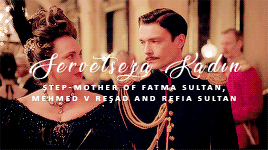
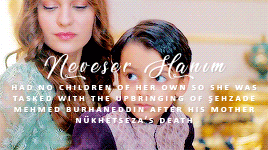


OTTOMANLADIES’ 2ND BIRTHDAY CELEBRATIONS
ottoman consorts who took other women’s children into their care – requested by anon
#history#historyedit#ottoman history#kosem sultan#turhan hatice sultan#nevfidan kadin#verdicenan kadin#sayeste hanim#rahime perestu sultan#neveser hanim#servetseza kadin#ottomanladiesedit#*requested#adile sultan daughter of mahmud ii#abdulhamid ii#cemile sultan daughter of abdulmecid i#mehmed v#fatma sultan daughter of abdulmecid i#refia sultan daughter of abdulmecid i#mehmed vi#mediha sultan daughter of abdulmecid i
526 notes
·
View notes
Photo










𝐢𝐧 𝐭𝐡𝐞 𝐦𝐨𝐧𝐭𝐡 𝐨𝐟 𝐣𝐮𝐥𝐲 𝐢𝐧 𝐨𝐭𝐭𝐨𝐦𝐚𝐧 𝐡𝐢𝐬𝐭𝐨𝐫𝐲
#history#historyedit#ottoman history#on this day in ottoman history#mahmud ii#mihrimah sultan daughter of mahmud ii#fehime sultan daughter of murad v#mehmed v#esma sultan daughter of abdulhamid i#hatice sultan daughter of mustafa iii#hatice sultan daughter of mehmed iv#murad iii#mehmed i#ottomanladiesedit#*everymonth
114 notes
·
View notes
Note
Was it possible for a princess to be powerful even if she was the step sister of the sultan? Is there a notable example of this? I always wondered if Mihrimah could have held some power even in Mustafa became sultan, what do you think?
Mmh, it was not uncommon for half-sisters to be influential:
Esma Sultan was not Mahmud II’s sister but she was his favourite nonetheless
Murad V had no sisters but Fatma Sultan and Seniha Sultan were still his closest (it’s interesting to note that Fatma was, on the contrary, Mehmed V’s full sister)
Beyhan Sultan and Hatice Sultan had different mothers, yet they were prominent during the reign of Selim III
Cemile Sultan was Abdülhamid II’s half-sister but she figured right after the valide sultan in official ceremonies.
Another interesting case is Ahmed III’s:, it was not his eldest sister Hatice (though alive) who was the power broker in Istanbul but his daughter Fatma.
#anon#ask post#ask: ottoman history#esma sultan daughter of abdulhamid i#mahmud ii#murad v#fatma sultan daughter of abdulmecid i#seniha sultan daughter of abdulmecid i#beyhan sultan daughter of mustafa iii#hatice sultan daughter of mustafa iii#selim iii#cemile sultan daughter of abdulmecid i#abdulhamid ii#ahmed iii#hatice sultan daughter of mehmed iv#fatma sultan daughter of ahmed iii
31 notes
·
View notes
Photo








harem + scandals -- requested by @kinda-real-awkward
#kinda-real-awkward#history#historyedit#haseki hurrem sultan#suleyman i#hundi fatma hatun#safiye sultan#fatma sultan daughter of mahmud ii#sahihuban sultan daughter of selim i#turhan hatice sultan#meleki kalfa#hatice sultan daughter of murad v#naime sultan daughter of abdulhamid ii#hatice sultan daughter of mustafa iii#ottomanladiesedit#*requested
3K notes
·
View notes
Text
On this day, 23 June, in Ottoman history
23 June 1567 - Selim II left for Edirne: after a six-month period of residence in Istanbul between 5 December 1566 and 23 June 1567, “Selim removed his court to Edirne for the winter season ‘in accordance with ancient rule and custom’”, according to the historian Selaniki.
23 June 1675 - imperial audiences in occasion of Hatice Sultan’s wedding: two days before, Mehmed IV had announced the engagement between his eldest daughter Hatice and Musahib Mustafa Paşa; on 23 June he accepted congratulations from all the leading statesmen of the empire.
23 June 1691 - enthronement of Ahmed II: Ahmed II was the youngest of Sultan Ibrahim’s sons who succeeded him, and the only child of Haseki Hatice Muazzez Sultan. As the youngest, he spent 42 years inside the kafes and reigned only for 44 months. His mother had died in 1687 and so didn’t see his accession. Ahmed II spent much of his reign in Edirne, like his brother and father had done, and even the sword girding ceremony was carried out in the Old Mosque in Edirne.
23 June 1878 - birth of Prince Mahmud Necmeddin: “Second son of Sultan Reşad, by the lady Dürrüaden, he was born 23 June 1878 and died 27 June 1913 at age 35. He had no children.” – Douglas Scott Brookes, The Concubine, the Princess, and the Teacher
23 June 1992 - death of Nevzad Hanım: Sultan Mehmed VI Vahideddin’s last wife, she was born in 1900 to Bahçıvan Şaban Bargu Efendi and Hatice Hanim. She entered palace service in 1913 in the household of Şehzade Ziyaeddin Efendi, where she was trained by a servant named Ceylanyar Hanım. It is not known when or how Nevzad met sultan Mehmed VI but on 1 September 1921 they married and, weirdly, she never obtained the rank of Kadınefendi, though she should have been the Fourth Imperial Consor. The sixty-one year old sultan was completely smitted with his new young concubine, and would refuse to accept visitors or to leave the palace since that would mean part from her. Harem teacher Safiye Ünüvar described an audience with her: “When we reached Her Ladyship’s villa we entered through the outer door and the lady greeted me in front of the inner, glass door. I started to off er my salutations to her in the customary fashion but she said, “No, please,” kissed my hand and took my arm to lead me to the guest parlor upstairs on the second floor. As we went upstairs I knew my intuition had proven correct. I found her as she had been, gracious and modest. We dined together. When toward evening the time came to take my leave, she made me promise to come back with all the princesses next time.” When Mehmed VI fled the country in 1922, Nevzad was imprisoned at Feriye Palace. When the Ottoman dynasty was exiled, she dressed like a kalfa and was allowed to leave. She joined her husband in Sanremo and stayed there until his death. In 1937, she published her memoirs “Yıldız'dan San Remo'ya” (From Yıldız to San Remo). After Mehmed Vahideddin’s death she married Ziya Seferoğlu, with whom she had a daughter an ad son, and took the name Nimet Seferoğlu. All her life she refused to talk about the sultan and, when a journalist, in 1974 asked her what life had been like with Sultan Vahideddin, she replied: “I buried that time in the depths of my heart”. She died on 23 June 1992 in her home in Göksu.
#history#on this day in history#on this day in ottoman history#selim ii#mehmed iv#hatice sultan daughter of mehmed iv#ahmed ii#sehzade mahmud necmeddin son of mehmed v#late ottoman empire#mehmed vi#nevzad hanim
13 notes
·
View notes
Text
On this day, 14 June, in Ottoman history
14 June 1768 - birth of Hatice Sultan: daugter of Mustafa III and Adilşah Kadın, Hatice was Beyhan Sultan’s elder sister. Celebrations in honour of her birth lasted for four days, and Rashid Efendi (author of Çeşmizade Tarihi) composed a poem to celebrate the birth. Her father died when she was six, so Hatice Sultan, her mother and her younger sister Beyhan settled in the Old Palace. According to her mother, the princess developed depression because of the close environment where she was supposed to live. On 3 November 1786, at eighteen years old, Hatice married Vezir Seyyid Ahmed Paşa. She was widowed in 1798, at thirty years old, and never remarried. During the reign of her half-brother Selim III, the dynasty took an interest in modernising the palaces; to achieve this, the sultan called German-born French painter and architect Anton Ignaz Melling from the Danish court. Hatice met him in 1790 and asked him to design a new mansion for her, which was completed in 1793. It was so different from the usual Turkish style that even Selim III was interested in it and would often ride there and be a guest of his sister’s. Hatice Sultan was enthralled by Melling and even allowed him to enter the palace harem to get inspiration for his paintings and designs. The architect used to design clothes for his patroness, fournish the sultan’s rooms, design furniture pieces and jewelry. She used to call him “Melling Kalfa” in her letters, written in French until the architect managed to teach himself Ottoman Turkish, which he wrote using the latin alphabet– 130 years before the official adoption of the new Turkish alphabet. At the height of Melling’s popularity, Napoleon Bonaparte occupied Egypt, creating tensions between the empire and France. Melling’s pension was cut off and he was forbidden to come to court. Nevertheless, by summer of 1802 Melling and Hatice Sultan had started to exchange letters again. It is not known the nature of their relationship in details but it’s clear from their letters that the two shared a love for the city of Istanbul. Hatice Sultan died at the age of forty-four on 17 July 1822, and was buried in the mausoleum of her step-mother Mihrişah Sultan.
14 June 1826 - last insurrection of the janissaries: barely two weeks after Mahmud II had announced his reforms, the janissaries revolted. “On the night of 14 June small bands of janissaries began to gather at their parade ground; some among them roamed the streets of Istanbul, firing guns and starting fires and looking for their commander-in-chief whom they felt had sold them out. He managed to evade them,85 but at dawn the many hundreds by now assembled at the parade ground – one eyewitness dubbed them ‘prattling curs’86 – overturned their cauldrons in the traditional gesture of defiance. Again they surged through the city, looting as they went; one group sacked Grand Vezir Selim Mehmed Pasha’s mansion, and the women of his household escaped only by hiding in an underground cavern in the garden.87 The Sultan was at his palace in Beşiktaş when the insurrection broke out. Some of his predecessors, apt to hide at the first sign of a janissary mutiny, would have stayed where they were, but Mahmud took a caique down the Bosporus to Topkapı Palace. So inevitable had been a janissary uprising against the reforms, and such pains had the Sultan taken to ensure that they succeeded, that a contingency plan had already been prepared. […] The Sultan made a stirring speech on his arrival there, and following the Sheikhulislam’s juridical opinion to the effect that Islamic law permitted such an uprising to be put down with force, Mahmud went into the treasury and brought out the sacred standard of the Prophet. The standard was duly taken from the palace and hung up on the pulpit in the mosque of Sultan Ahmed on the Hippodrome. It worked its magic, and as criers went around the city calling all true Muslims to assemble beneath it, the populace hurried to do so. Officers of state who gathered in the mosque to discuss how to proceed decided to reject negotiation. A body of loyal troops – artillerymen, sappers and bombardiers – made for the janissary barracks, but the gates were shut fast against them as the rebel janissaries barricaded themselves inside. The imperial cannoneers opened fire, and the barracks were soon ablaze; those who could, fled, to engage in hand-to-hand battle with the loyal troops waiting outside – the rest burned inside. Mahmud had not intended to wipe the janissaries off the face of the earth in such a violent manner, but both his care in preparing for the introduction of his reform of the corps, and the realism that demanded a contingency plan should matters go awry, meant that when he found himself with no other option, he could resolutely bring the operation to its grisly conclusion.” – Caroline Finkel, Osman’s dream: the History of the Ottoman Empire
#history#ottoman history#on this day in history#on this day in ottoman history#hatice sultan daughter of mustafa iii#mahmud ii#selim iii
14 notes
·
View notes
Photo










𝐢𝐧 𝐭𝐡𝐞 𝐦𝐨𝐧𝐭𝐡 𝐨𝐟 𝐬𝐞𝐩𝐭𝐞𝐦𝐛𝐞𝐫 𝐢𝐧 𝐨𝐭𝐭𝐨𝐦𝐚𝐧 𝐡𝐢𝐬𝐭𝐨𝐫𝐲
#history#historyedit#ottoman history#ottomanladiesedit#*everymonth#kosem sultan#suleyman i#emine sultan daughter of mustafa ii#murad iv#mustafa iv#mihrimah sultan daughter of mahmud ii#fatma ulviye sultan daughter of mehmed vi#haseki hatice muazzez sultan#mara hatun#fehime sultan daughter of murad v#seniha sultan daughter of abdulmecid i#sevkefza sultan#hibetullah sultan daughter of mustafa iii#aliye sultan daughter of murad v#selim i#saliha sultan#murad v#abdulhamid ii#fatma sultan daughter of ahmed iii#hanzade sultan daughter of ahmed i#servetseza kadin#ayse sultan daughter of mustafa ii#hatice sultan daughter of ahmed iii
138 notes
·
View notes
Photo
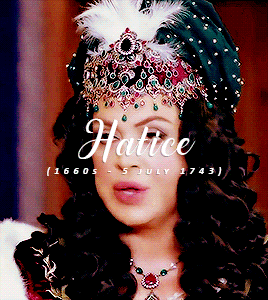



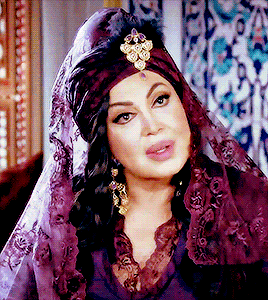

(OTTOMAN) WOMEN’S HISTORY MEME | 5 princesses: Hatice Sultan, daughter of Mehmed IV
Hatice Sultan is known to have repeatedly fêted her brothers, Mustafa II and Ahmed III, in her palaces. On the eve of the events that led to the disastrous revolt of 1730, she was holding a banquet for the sultan and the grand vizier, as well as a crowd of high-ranking dignitaries, at her Üsküdar palace on the Bosphorus. She has, in fact, been blamed for preventing the grand vizier from moving on to Istanbul that night in order to take immediate action against the rebels. Was she secretly a member of the opposition party, or was this an error of judgment on her part? In any case, it led to her brother Ahmed Ill's dethronement. When Hadice the Elder died in 1743 she was in her nineties. She could not possibly have been as ambitious and motivated a collector as she had once been. Nevertheless, she had managed to acquire a dozen pieces of European porcelain during the first ten years of their appearance in Ottoman lands. As a true collector, she must have retained the drive to hunt for the most recent diplomatic gifts presented to the new sultan, her nephew Mahmud I (r. 1730-54). — Tülay Artan, Eighteenth-century Ottoman Princesses as Collectors: Chinese and European Porcelains in the Topkapı Palace Museum
136 notes
·
View notes